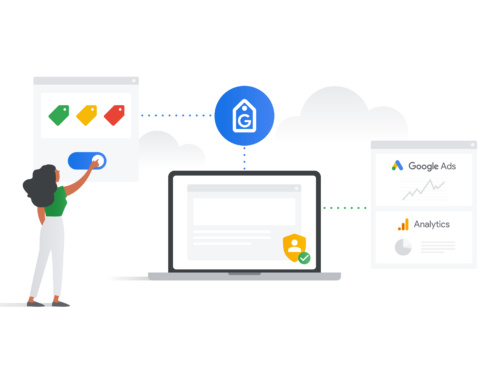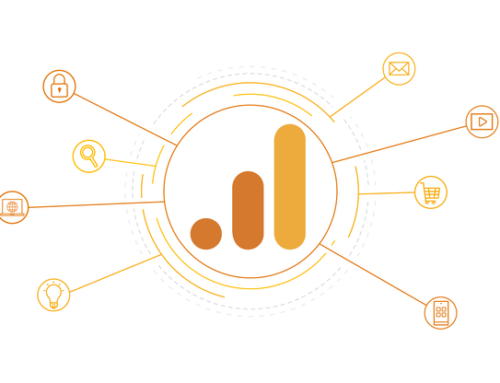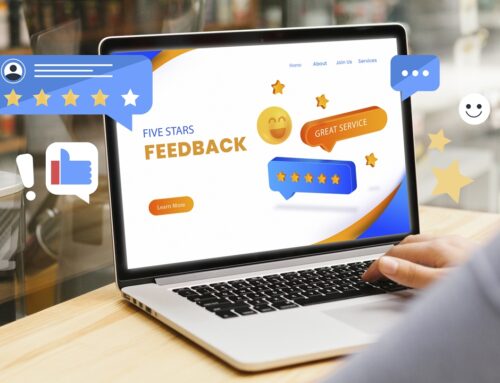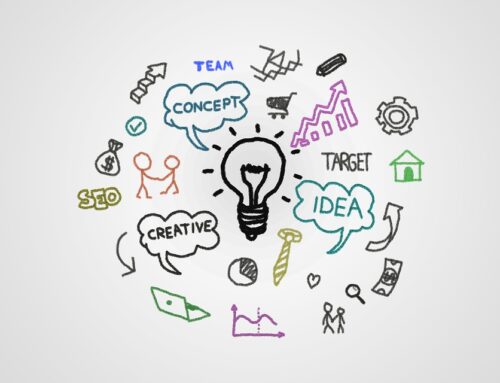Digital Marketing Trends and Statistics 2024
In the ever-evolving landscape of digital marketing, staying informed about the latest trends and statistics is crucial for businesses aiming to maintain a competitive edge. This comprehensive guide delves into the most impactful digital marketing statistics for 2024, offering insights and actionable takeaways for marketers and business owners alike.
Table of Contents
- Global Digital Advertising Landscape
- Social Media Marketing
- Email Marketing
- Search Engine Optimisation (SEO)
- Content Marketing
- Artificial Intelligence in Marketing
- Mobile Marketing
- E-commerce Trends
- Video Marketing
- Emerging Trends and Future Outlook
- Conclusion
- Taking Action
- Practical Tools and Resources
Global Digital Advertising Landscape
The digital advertising sector continues to experience remarkable growth, reshaping how businesses connect with their target audiences.
Key Statistic: Global digital advertising spend is projected to reach $626.9 billion by 2024, marking a 63% increase from previous years.
What This Means for Marketers:
- Increased competition for digital ad space
- Need for more targeted and personalised advertising strategies
- Opportunity to reach a wider audience through digital channels
Actionable Takeaway: Allocate a significant portion of your marketing budget to digital advertising, focusing on platforms that align with your target audience’s preferences and behaviours.
Social Media Marketing
Social media platforms remain a cornerstone of digital marketing strategies, offering unparalleled opportunities for brand engagement and customer interaction.
Key Statistics:
- 59% of the global population actively engages with social media platforms
- Social commerce revenues are expected to surpass $1.2 trillion by 2024
What This Means for Marketers:
- Social media is no longer just for brand awareness; it’s a vital sales channel
- Platforms are evolving to support direct purchasing capabilities
Actionable Takeaways:
- Develop a robust social commerce strategy, particularly on platforms like Facebook and Instagram
- Create engaging, shareable content that resonates with your target audience
- Leverage platform-specific features (e.g., Instagram Reels, TikTok challenges) to increase visibility
Email Marketing
Despite the rise of new marketing channels, email marketing continues to deliver exceptional returns on investment.
Key Statistics:
- Email marketing generates $36 for every $1 spent, a 3600% ROI
- 97% of digital consumers have engaged with email in the past month
What This Means for Marketers:
- Email remains a highly effective channel for nurturing leads and driving conversions
- Personalisation and segmentation are crucial for standing out in crowded inboxes
Actionable Takeaways:
- Implement AI-driven personalisation to tailor email content to individual preferences
- Segment your email list based on user behaviour and preferences
- Optimise emails for mobile devices to cater to on-the-go consumers
Search Engine Optimisation (SEO)
SEO remains a critical component of digital marketing, driving organic traffic and establishing long-term online visibility.
Key Statistics:
- 91% of web pages receive no organic search traffic from Google
- 70% of marketers say SEO generates more high-quality leads than any other marketing tactic
What This Means for Marketers:
- The competition for organic search visibility is intense
- Effective SEO strategies can provide a significant competitive advantage
Actionable Takeaways:
- Prioritise mobile optimisation, as Google uses mobile-first indexing
- Focus on creating high-quality, relevant content that answers user queries
- Optimise for voice search, as 20% of all online searches are now voice-activated
Key Take aways:
- Conduct a comprehensive audit of your existing content and optimise it for relevant keywords
- Develop a content strategy that focuses on creating in-depth, authoritative resources on industry topics
- Invest in technical SEO improvements, such as enhancing site speed and ensuring mobile responsiveness
- Monitor your organic traffic growth over time, aiming for steady increases as you implement these strategies
- Remember that SEO is a long-term strategy; significant improvements may take several months to materialise
Content Marketing
Content marketing continues to be a powerful tool for attracting and engaging audiences across various digital channels.
Key Statistics:
- 73% of B2B marketers consider content marketing a core component of their overall strategy
- 50% of marketers plan to increase their content marketing budgets in 2024
What This Means for Marketers:
- Quality content is essential for building brand authority and trust
- Diversifying content formats can help reach and engage different audience segments
Actionable Takeaways:
- Develop a comprehensive content strategy that aligns with your business goals
- Experiment with various content formats, including video, podcasts, and interactive content
- Use data analytics to understand which types of content resonate most with your audience
Example: A healthcare technology company saw a 150% increase in lead generation after implementing a content marketing strategy that included:
- Weekly blog posts addressing common industry challenges
- Monthly webinars featuring industry experts
- An interactive assessment tool for potential clients to evaluate their technology needs
Artificial Intelligence in Marketing
AI is revolutionising digital marketing, enabling more personalised and efficient campaigns.
Key Statistics:
- 92% of businesses leverage AI-driven personalisation to propel growth
- 31% of marketers are using AI to automate social media post creation
What This Means for Marketers:
- AI can significantly enhance personalisation efforts across marketing channels
- Automation of routine tasks allows marketers to focus on strategy and creativity
Actionable Takeaways:
- Implement AI-powered chatbots for improved customer service and lead qualification
- Use AI tools for content creation and optimisation to improve efficiency
- Leverage predictive analytics to anticipate customer needs and behaviour
Innovative Application: An e-commerce retailer implemented an AI-powered recommendation engine that analyses customer browsing and purchase history. This resulted in a 35% increase in average order value and a 28% boost in customer retention rates.
By embracing these digital marketing trends and leveraging the latest technologies, businesses can create more effective, targeted, and engaging marketing campaigns. The key to success lies in continuously adapting strategies based on data-driven insights and evolving consumer behaviours.
Mobile Marketing
With the increasing dominance of mobile devices, optimising marketing efforts for mobile users has become crucial for success.
Key Statistics:
- 68% of all website traffic comes from mobile devices
- 57% of users say they won’t recommend a business with a poorly designed mobile site
What This Means for Marketers:
- Mobile optimisation is no longer optional; it’s essential
- User experience on mobile devices directly impacts brand perception and customer loyalty
Actionable Takeaways:
- Ensure your website is fully responsive and mobile-friendly
- Optimise page load times for mobile devices
- Consider developing a mobile app if it adds value for your customers
Success Story: A retail clothing brand saw a 45% increase in mobile conversions after redesigning their website with a mobile-first approach, implementing features like:
- One-touch purchasing for registered users
- Image-heavy, swipe-friendly product galleries
- Location-based store finder and inventory checks
E-commerce Trends
The e-commerce sector continues to evolve rapidly, driven by changing consumer behaviours and technological advancements.
Key Statistics:
- E-commerce sales are forecast to reach $6.5 trillion in 2024, a 21% increase from previous years
- 75% of consumers expect free shipping on orders above a certain value
What This Means for Marketers:
- The competition in e-commerce is intensifying, requiring innovative strategies to stand out
- Customer expectations for convenience and value are higher than ever
Actionable Takeaways:
- Implement omnichannel strategies to provide a seamless shopping experience across all platforms
- Offer flexible shipping options, including free shipping thresholds
- Use AI-powered personalisation to recommend products and create tailored shopping experiences
Innovative Approach: An online furniture retailer integrated augmented reality (AR) into their mobile app, allowing customers to visualise products in their homes before purchasing. This led to a 35% reduction in return rates and a 28% increase in average order value.
Video Marketing
Video content continues to dominate social media and content marketing strategies, offering engaging ways to connect with audiences.
Key Statistics:
- 86% of businesses use video as a marketing tool
- Users spend an average of 19 hours per week watching online videos
What This Means for Marketers:
- Video is a powerful medium for storytelling and brand building
- Diversifying video content across platforms can significantly increase reach and engagement
Actionable Takeaways:
- Create a variety of video content, including short-form videos for platforms like TikTok and Instagram Reels
- Optimise videos for search engines by using descriptive titles, tags, and closed captions
- Leverage live streaming to connect with your audience in real-time
Case Study: A B2B software company launched a series of explainer videos and customer testimonials, resulting in:
- 50% increase in time spent on their website
- 30% boost in demo requests
- 25% improvement in customer onboarding satisfaction rates
By incorporating these strategies into your digital marketing efforts, you can create more engaging, effective campaigns that resonate with your target audience and drive measurable results.
Emerging Trends and Future Outlook
As we look ahead, several emerging trends are poised to shape the future of digital marketing:
- Voice Search Optimisation
- By 2024, the number of digital voice assistants is expected to reach 8.4 billion units – a number higher than the world’s population.
- Takeaway: Optimise content for natural language queries and focus on featured snippets to capture voice search traffic.
- Artificial Intelligence and Machine Learning
- 84% of marketing organisations are implementing or expanding AI and machine learning in 2024.
- Takeaway: Invest in AI-powered tools for personalisation, predictive analytics, and automated customer interactions.
- Privacy-First Marketing
- With the phasing out of third-party cookies, 72% of marketers believe that the fundamentals of advertising will change.
- Takeaway: Focus on building first-party data strategies and transparent data practices to maintain consumer trust.
- Augmented and Virtual Reality
- The AR and VR market in marketing is projected to reach $2.6 billion by 2025.
- Takeaway: Explore AR/VR technologies to create immersive brand experiences and innovative product demonstrations.
- Sustainability in Marketing
- 81% of consumers strongly feel that companies should help improve the environment.
- Takeaway: Incorporate sustainability into your brand messaging and demonstrate genuine commitment to environmental causes.
Conclusion
The digital marketing landscape continues to evolve at a rapid pace, driven by technological advancements and changing consumer behaviours. To stay competitive in 2024 and beyond, marketers must:
- Embrace data-driven decision-making
- Prioritise personalisation across all channels
- Adapt to new privacy regulations and focus on building trust
- Leverage emerging technologies like AI, AR, and VR
- Create authentic, value-driven content that resonates with audiences
By staying informed about these trends and statistics, and continually refining your strategies, you can create more effective, engaging, and successful digital marketing campaigns.
Taking Action
- Assess Your Current Strategy: Use the insights from this article to evaluate your current digital marketing efforts. Identify areas where you can improve or innovate.
- Stay Informed: Subscribe to reputable digital marketing publications and attend industry conferences to stay up-to-date with the latest trends and best practices.
- Experiment and Adapt: Don’t be afraid to try new technologies or approaches. Set aside a portion of your budget for experimentation and measure the results carefully.
- Prioritise Customer Experience: Remember that behind every statistic is a real person. Always prioritise creating positive, valuable experiences for your audience.
- Collaborate and Learn: Join professional networks or online communities to share experiences and learn from other marketers facing similar challenges.
By taking these steps and staying agile in your approach, you’ll be well-positioned to thrive in the dynamic world of digital marketing in 2024 and beyond.
Practical Tools and Resources for Digital Marketers
To help you implement the strategies and insights discussed in this article, we’ve compiled a list of useful tools and resources across various digital marketing domains:
Analytics and Data Visualisation
- Google Analytics: Essential for tracking website performance and user behaviour.
- Tableau: Powerful data visualisation tool for creating interactive dashboards.
- Hotjar: Provides heatmaps and user session recordings for UX insights.
SEO and Content Marketing
- SEMrush: Comprehensive tool for keyword research, competitor analysis, and content optimisation.
- Ahrefs: Excellent for backlink analysis and content gap identification.
- Grammarly: AI-powered writing assistant for creating error-free content.
Social Media Management
- Hootsuite: Manage multiple social media accounts and schedule posts.
- Sprout Social: Offers social listening and analytics features.
- Canva: User-friendly graphic design tool for creating social media visuals.
Email Marketing
- Mailchimp: Popular email marketing platform with automation features.
- Constant Contact: Offers email templates and list management tools.
- Litmus: Email testing and analytics platform for optimising campaigns.
AI and Personalisation
- Optimisely: A/B testing and personalisation platform.
- Persado: AI-powered tool for generating optimised marketing language.
- Albert: AI marketing platform that automates campaign execution.
Video Marketing
- TubeBuddy: YouTube channel management and optimisation tool.
- Lumen5: AI-powered video creation platform for social media content.
- Wistia: Video hosting platform with advanced analytics for businesses.
E-commerce
- Shopify: Popular e-commerce platform for building online stores.
- Yotpo: Customer content marketing platform for e-commerce.
- Klaviyo: E-commerce focused email marketing and SMS platform.
Project Management for Marketers
- Trello: Visual project management tool for organising marketing campaigns.
- Asana: Comprehensive project management and team collaboration platform.
- Monday.com: Customisable work management platform for marketing teams.
Learning Resources
- Google Digital Garage: Free online courses covering various digital marketing topics.
- HubSpot Academy: Offers free certifications in inbound marketing, content marketing, and more.
- Coursera: Provides access to digital marketing courses from top universities and institutions.
By leveraging these tools and resources, you can more effectively implement the strategies discussed in this article and stay at the forefront of digital marketing trends in 2024 and beyond.
Remember to evaluate each tool based on your specific needs, budget, and objectives. Many of these platforms offer free trials, allowing you to test their features before committing to a subscription.







